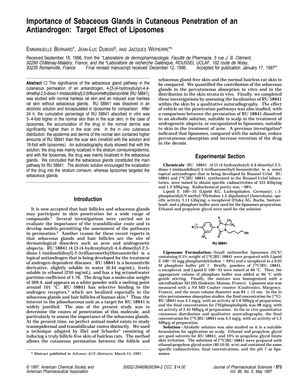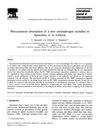Importance of Sebaceous Glands in Cutaneous Penetration of an Antiandrogen: Target Effect of Liposomes
May 1997
in “
Journal of Pharmaceutical Sciences
”

TLDR Sebaceous glands in the skin play a key role in absorbing the antiandrogen drug RU 58841, especially when it's encapsulated in liposomes.
In 1997, a study was conducted to understand the role of sebaceous glands in the skin penetration of an antiandrogen, RU 58841. The study used normal hairless rat skin and scar hairless rat skin without sebaceous glands for comparison. The results showed that the absorption of RU 58841 was 3-4 times higher in normal skin than in scar skin. When encapsulated in liposomes, the drug's accumulation in the normal dermis was significantly higher than in the scar dermis. The study concluded that sebaceous glands were the main pathway for RU 58841. The drug was mainly localized in the stratum corneum when dissolved in an alcoholic solution, while liposomes targeted the sebaceous glands. The sebaceous route was not predominant for phospholipids, indicating that the liposomes did not penetrate intact into the sebaceous glands.


